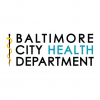This Immigrant Doctor Is Reimagining Health in the American City (Take Part)
Friday Dec 16th, 2016
“See, son, since the day you was born, you was judged.” Tyesha Harrell read from a notebook to several dozen people crowded into a purple-painted back room of the Safe Kids Zone in West Baltimore. Her voice cracked with emotion. “But Mommy got you. Mommy got you. And I will try my best to teach you how to be a man. I will not always hold your hand, but I promise you will be a man.”
The poem’s subject, one-year-old Tymond, wiggled away from his aunt, pushing his way through a sea of knees. He toddled past students from a troubled high school and their mentors, health officials, community activists, a member of Congress, and Baltimore Health Commissioner Leana Wen, whose department had organized the gathering.
As his big brown eyes peered around the room, Tymond was the very embodiment of pure potential. But as his mother knows all too well, the odds are stacked against him. He is an African American boy growing up in Sandtown-Wincester, the impoverished neighborhood where Freddie Gray lived until his fatal 2015 encounter with police. The average life span here is 70, about the same as in North Korea, while residents of wealthier neighborhoods nearby can expect another two decades of life. People here suffer more; they are more likely than residents of wealthier neighborhoods to be born prematurely, develop lead poisoning or asthma, have a baby as a teen, struggle with addiction, or become a victim of violence.
Harrell, an organizer with an advocacy group for public housing residents, and the others had gathered in the Safe Kids Zone, an after-school drop-in center about two blocks from the epicenter of the unrest that arose after Gray’s death. They had come to celebrate a grant that they hoped would lift some of the barriers that hold back children here. Wen had secured $5 million in federal funds to help three West Baltimore communities recover from trauma. Unlike most grants, a board of community members would decide how to spend the money.
